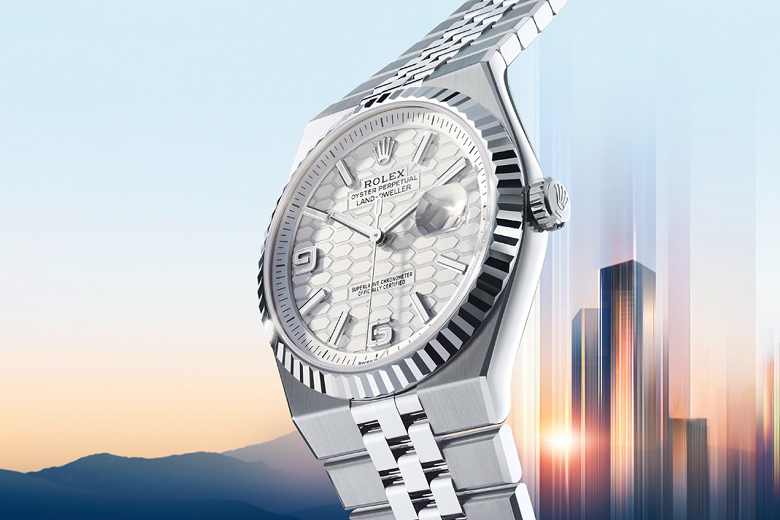From doubling the UK luxury watch market in under a decade to shaping buying trends in Asia-Pacific economies, Rolex’s leadership cements its status as the world’s most influential luxury timepiece brand
Rolex, synonymous with luxury, status, and innovation, has played a defining role in the remarkable transformation of the UK watch market and has left an indelible mark across continents, from Australia to Indonesia and Southeast Asia.
The evolution of the luxury watch industry—from shifting consumer demographics to digital innovation—reflects how Rolex’s market leadership and brand prestige continue to shape global tastes, retail strategies, and collector passions.
Rolex’s leadership in the UK has been pivotal, but its influence is genuinely global—setting benchmarks in Australia, Indonesia, and throughout Southeast Asia.
As both the market and consumers evolve, Rolex’s blend of tradition, innovation, and unyielding exclusivity promises to define luxury watch culture for years to come.

Rolex: The Catalyst in UK’s Watch Boom
Since 2015, the UK’s luxury watch market has experienced unprecedented growth, more than doubling its collective turnover to reach £2.15bn by 2023.
At the heart of this transformation is Rolex, often cited for its unique ability to drive both sales volume and consumer aspirations. In the UK, Rolex not only leads in total sales but sets the standard for product desirability and long-term investment value.
Events such as price increases—between 4% and 8% annually across key models in 2025—do little to deter demand and instead stoke the brand’s aura of exclusivity and resilience in the face of inflation and global economic headwinds.
Rolex watches are more than timepieces for British buyers; they are public statements and treasured assets. A 2025 survey of over 1.4 million UK owners showed that Rolex wearers see their watches as intrinsic to their identity—worn with pride, regularly serviced, and discussed passionately across online platforms.
The secondary market, too, is robust, with pre-owned Rolexes attracting fierce bidding and the grey market still thriving despite tightening supply.
Key drivers behind the Rolex-fueled boom in the UK include:
- The post-Brexit period, which made luxury watches up to 20% cheaper for international visitors, turbocharging tourist buying in London and driving up sales in regional hubs.
- Outstanding marketing and celebrity endorsement, further burnished by robust retail networks from Watches of Switzerland to independent boutiques.
- A unique mix of local and international buyers, which keeps turnover rising regardless of currency volatility or shifts in global travel habits.

Luxury Watch Market Growth: UK, Australia, Indonesia & Southeast Asia
The global luxury watch market reflects wider consumer trends, with Europe and Asia-Pacific leading as major consumption centers. In the UK, the industry is forecast to reach over USD 4.5 billion by 2033, fueled by high disposable incomes, digital-savvy consumers, and a continued passion for heritage craft.
Asia-Pacific, accounting for more than 40% of the global luxury watch share in 2024, stands out for its explosive growth—driven by China, Japan, and India, and increasingly by Southeast Asia. Australian consumers, emerging as major collectors and connoisseurs, look to Rolex as the pinnacle of reliability and prestige. Boutique openings and partnerships (such as Rolex’s expansion in India) mirror the appetite for international craftsmanship within these markets.
Australia has witnessed rising demand for both new and vintage Rolex models, with the brand featuring prominently in high-street luxury retail and collector circles.
The market is buoyed by affluent professionals, gifting traditions, and a robust digital resale marketplace, ensuring Rolex’s status as both a fashion statement and a long-term investment. Australian buyers are also increasingly tech-savvy, leveraging digital authentication services and participating in online auctions for rare models.
Indonesia and Southeast Asia present vibrant growth stories. In 2024, the Southeast Asian luxury watch market was valued at over USD 1 billion, projected to grow steadily at over 3% annually through 2033. Rolex enjoys star status here, often topping local best-seller lists alongside brands like Breitling and Seiko. Gifting culture, rising middle-class wealth, and growing networks of authorised retailers in Jakarta, Singapore, and Bangkok help code Rolex as a status symbol across the region.
The aspirational value in these fast-growing economies ensures demand keeps pace with, and sometimes outstrips, supply.
The World’s Watch: Trends Shaping the Future
Globally, Rolex’s market share remains unmatched, controlling an estimated 29% of the luxury watch sector in 2024, with competition from Cartier, Omega, and high-watchmaking houses still distant. The luxury watch field is shifting in response to several forces:
- Social media and influencer marketing have become central. Consumers now discover, discuss, and even authenticate their Rolex purchases via digital platforms, with brand storytelling and celebrity partnerships driving up desirability among millennials and Gen Z buyers.
- Counterfeiting and supply chain uncertainties are major hurdles. Advanced anti-counterfeiting technologies—micro-engraving, blockchain-backed digital service histories—are being implemented to protect Rolex’s integrity, especially in Asia where the grey market remains sizable.
- The growth of pre-owned and certified vintage Rolex markets—accelerated by digital commerce and specialized luxury resellers—has opened new doors for first-time collectors, investors, and aspirational buyers worldwide.
The Investment Case for Rolex
Amid volatile global markets, Rolex watches are seen not just as luxury goods but as stable, appreciating assets. In the UK (and increasingly in Australia and Southeast Asia), shortages and model waitlists have only amplified public fascination, with secondary pricing for models like the Submariner and Daytona sometimes outpacing primary market values.
This dynamic further embeds Rolex watches as aspirational objects—carrying not only status but also the promise of long-term financial return.



